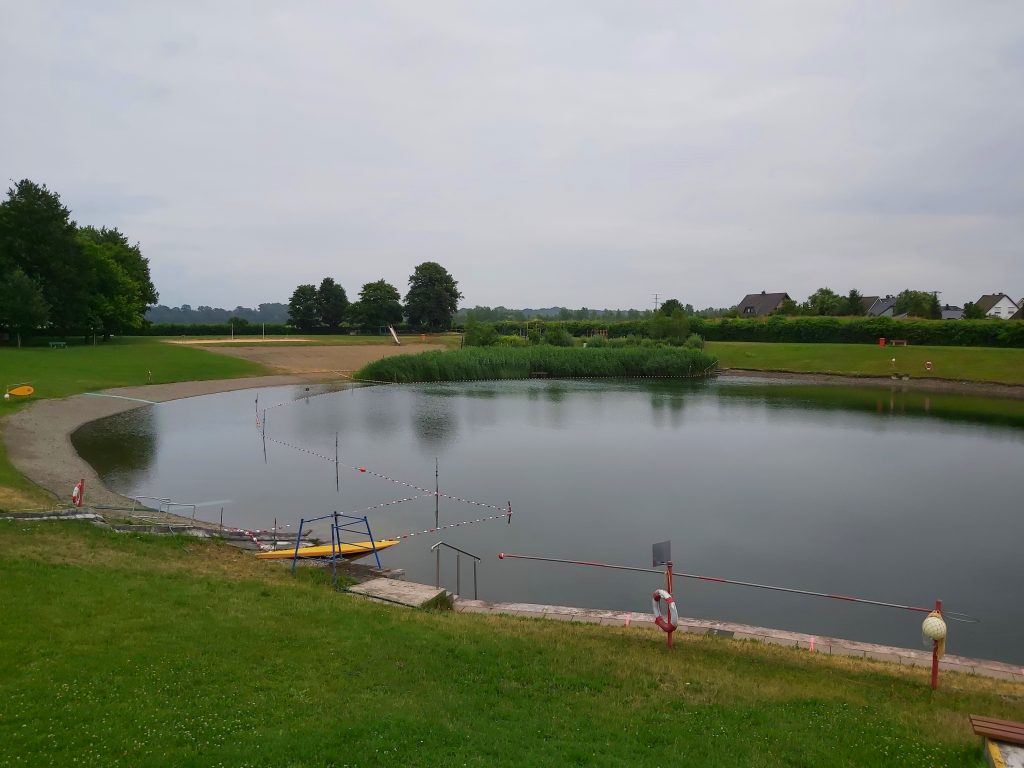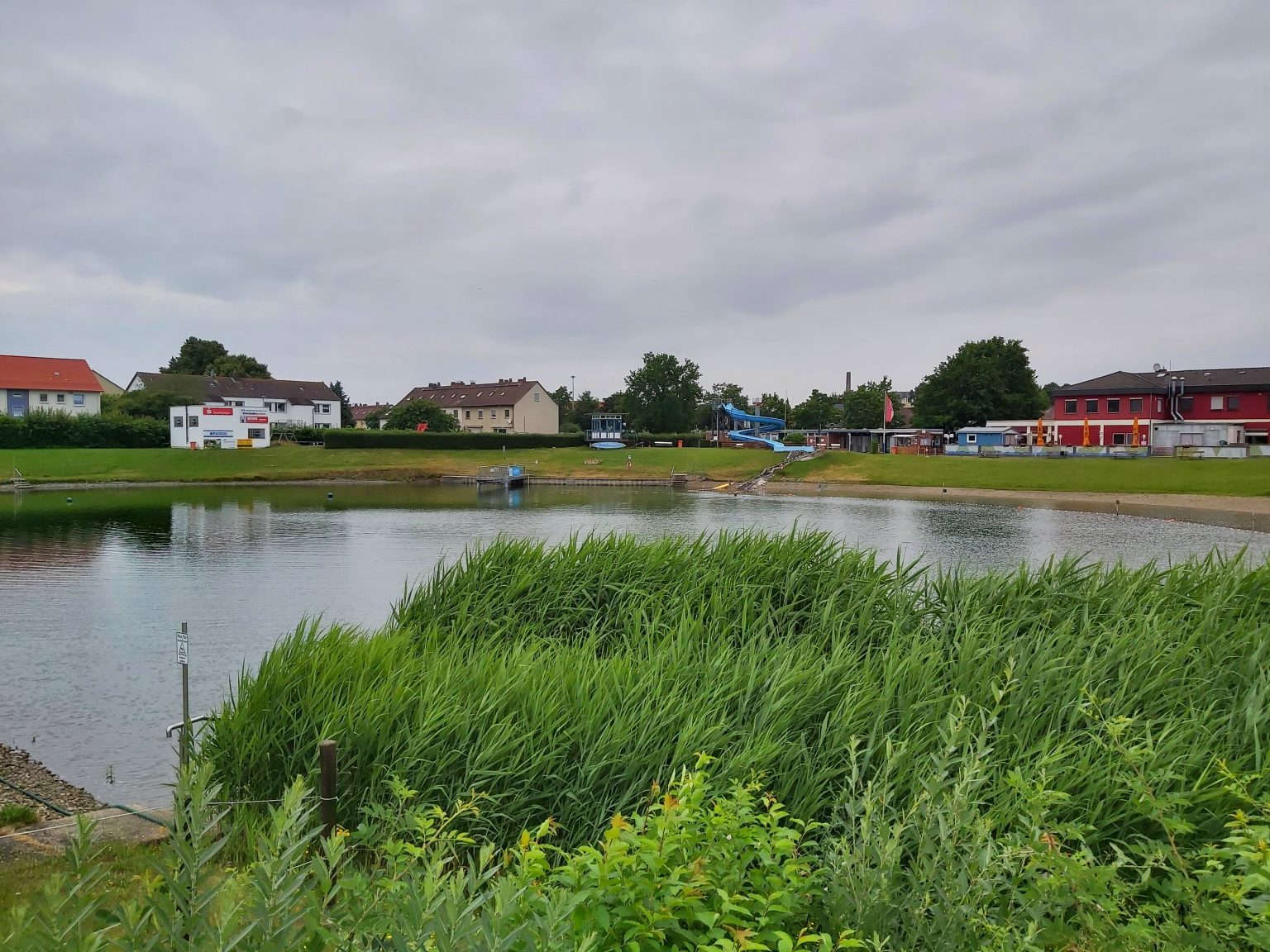In the Schladen natural bathing lake, there were severe algae blooms, especially in late summer, which hampered the use of the lake for bathing. In order to achieve a permanent improvement of the water quality and to guarantee that the lake can be used for bathing, a new filter concept was developed in 2001, within the framework of which a new Neptune filter (sprinkler filter) was installed for the external purification of the lake water. The number of visitors to the lake was assumed to be 35,000 guests per year. Assuming that one visitor contributes 0.074 g/m³ total Phosphorus to the lake, 2,590 g/(m³*year) of total phosphorus is contributed by bathers alone. Total Phosphorus promotes algae growth and is therefore undesirable. This nutrient is bound by the Neptune filter and is therefore no longer available in the water. The power of the system is controlled according to the demand. As it gets warmer, more number of bathers use the lake and the rate of water circulation is increased which is routed through the filter. The maximum capacity of the filter system is 54 m³/h.
The lake water is sucked in via a pontoon floating on the lake, to which a pump is attached. A coarse filter (perforated pipe) serves as a protection against floating coarse material, thus preventing clogging of the Neptune Filter nozzles in particular. The filter is connected to the pump via a free-standing pressure line, which can compensate for water levels from 0.60m to 2.00m. Nozzles distribute the water from the pressure line evenly over the filter surface. Atomization on baffles increases the oxygen input to the water. The filter material consists of oolite. After filtration, the water drains through drainage pipes and returns into the lake at the shore. The water treatment of the lake water via the sprinkled ground filter (Neptune filter) is shown in the following hydraulic diagram.
The result of the restoration
The plant has been in operation in this form since 2001. As the data documentation of the past years shows, the total phosphorus concentrations could be kept between 10 and 30 µg/l. As a result of this limitation, the algae bloom could be prevented.
Characteristics
Lake surface area: 5,700 m²
Lake volume: 22,800 m³
Facility data: Stage I: Coarse filter, Stage II: Neptune filter 220 m²







